Falcon 9 v1.1 & F9R Launch Vehicle Overview
This page describes the retired Falcon 9 v1.1 Launch Vehicle, see the Falcon 9 FT Overview for details on the current vehicle.
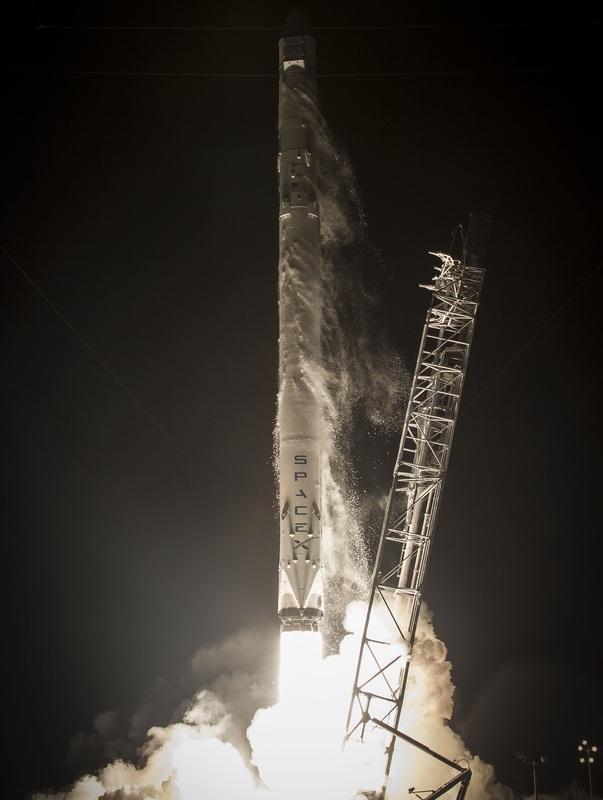
Falcon 9 v1.1 is a two-stage medium-lift launch system designed, manufactured and operated by Space Exploration Technologies (SpaceX).
The launcher is based on the Falcon 9 v1.0 version that has successfully flown 5 missions. Falcon 9 is capable of delivering payloads to a variety of orbits including Low Earth Orbit and Geostationary Transfer Orbit.
Falcon 9 is operated from Space Launch Complex 40 at Cape Canaveral Air Force Station, Florida, and SLC-4 at Vandenberg Air Force Base, California to allow the vehicle to target a number of orbital inclinations and decrease the number of range conflicts.
Notable payloads lifted by the Falcon 9 Fleet include the Dragon Spacecraft that has begun flying regular cargo delivery missions to the International Space Station. SpaceX holds a contract under NASA’s Commercial Resupply Services Program and the company has been selected to develop and operate a crewed version of Dragon as part of NASA’s Commercial Crew Program.
Under Commercial Resupply Services, the Falcon 9 – Dragon Combination will perform a total of 12 resupply missions to ISS. Falcon 9 was designed from the beginning to perform crewed launches with built-in robustness and redundancy. As part of Commercial Crew, Dragon aims to restore the United States’ human launch capability and deliver astronauts to the International Space Station. Falcon 9 will also launch DragonLab missions, but the bulk of launch business will occur on the Geostationary Communications Satellite market.
The v1.1 version of the Falcon 9 is based on the Falcon 9 v1.0 version – improving its payload capacity, increasing reliability and further decreasing launch cost by implementing easier manufacturing processes.
The main differences between the v1.0 and v1.1 include the use of the more powerful Merlin 1D engine, a new engine layout on the first stage and stretched propellant tanks on the first and second stage.
In its F9R configuration, the launcher has all characteristics of the Falcon 9 v1.1 with the addition of four landing legs, a cold gas attitude control system and four grid fins to the first stage.
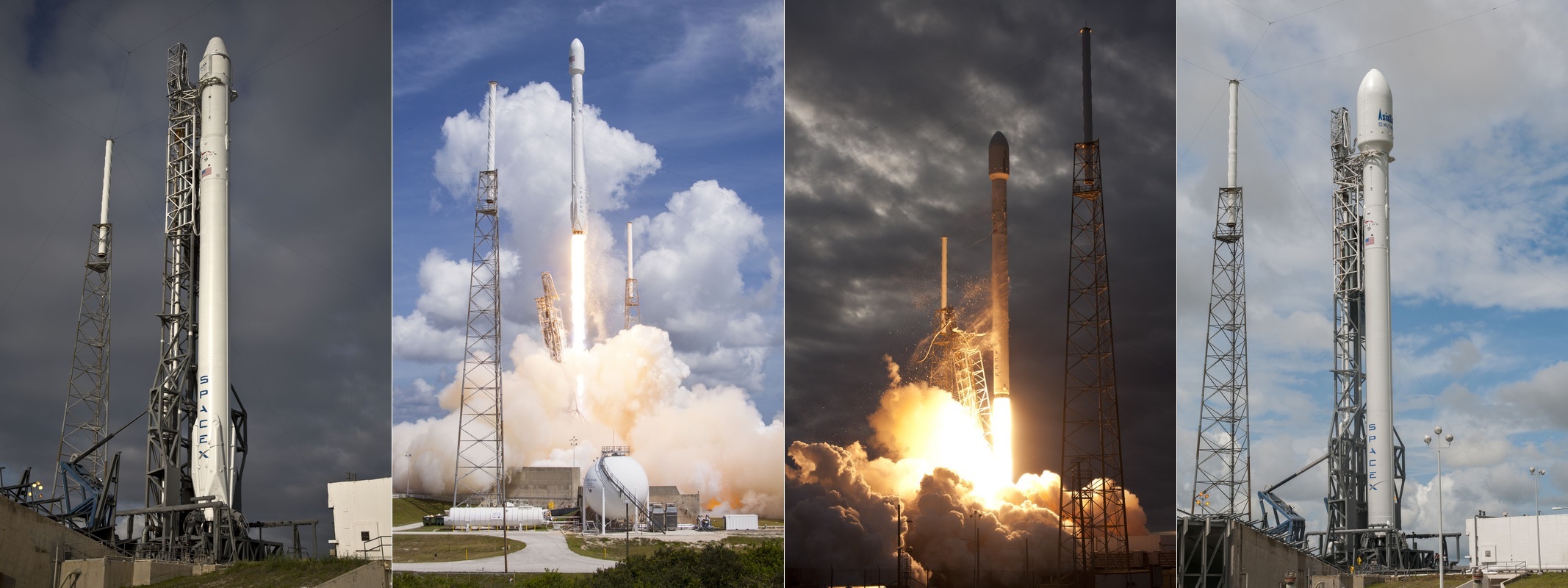
Falcon 9 Specifications
| Type | Falcon 9 v1.1 |
| Reusable Version | F9R |
| Height | 68.4m |
| Diameter | 3.66m |
| Launch Mass | >505,846kg (F9R) |
| Stages | 2 |
| Boosters | None |
| Mass to LEO | 13,150kg |
| Mass to GTO | 4,850kg |
| Launch Cost | $61.2M |
Falcon 9 v1.1 is a two-stage launch vehicle that stands 68.4 meters tall, is 3.66 meters in diameter with a liftoff mass of 505,846 Kilograms when flying in its F9R version with re-usable first stage. The launcher can deliver payloads of up to 13,150 Kilograms to Low Earth Orbit and 4,850kg to Geostationary Transfer Orbit.
Aiming to become a re-usable launcher, Falcon 9’s first stage is modified with a reaction control system, four grid fins for steering and four deployable landing legs. Dropping the second stage off on its way to orbit, the first stage goes through a series of complex propulsive maneuvers before guiding itself through the atmosphere towards a target landing site for a soft touchdown under the power of one of its Merlin engines to be re-used on a future flight.
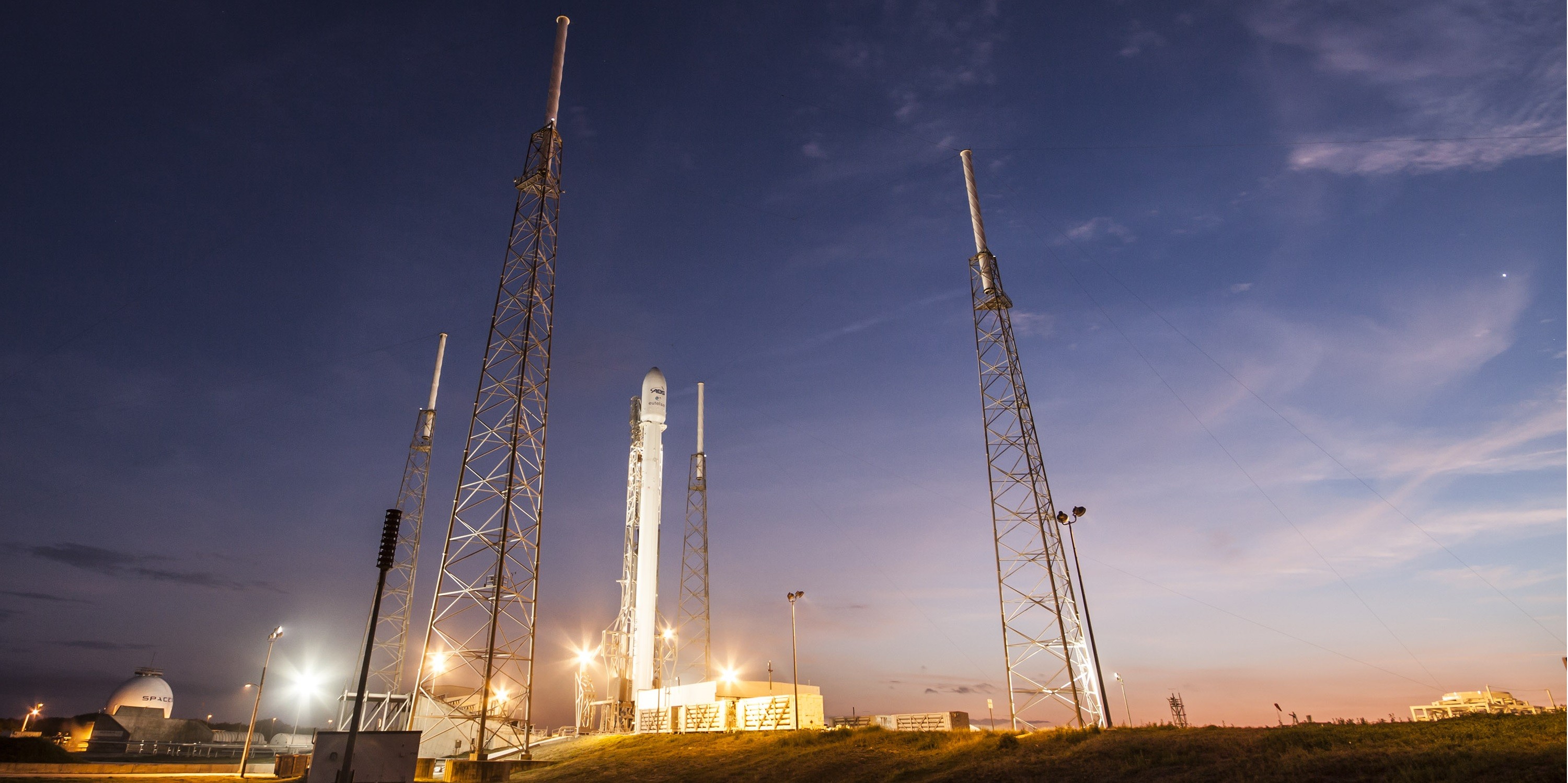
First Stage
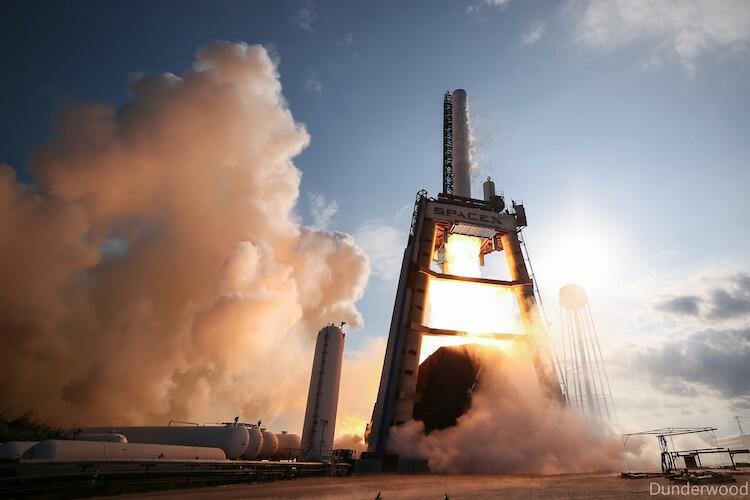
| Type | Falcon 9 v1.1 Stage 1 |
| Length | 41.2m (without Interstage) |
| Diameter | 3.66m |
| Inert Mass | ~23,100kg (F9R: ~25,600kg) |
| Propellant Mass | 395,700kg |
| Fuel | Rocket Propellant 1 |
| Oxidizer | Liquid Oxygen |
| LOX Mass | 276,600kg |
| RP-1 Mass | 119,100kg |
| LOX Tank | Monocoque |
| RP-1 Tank | Stringer & Ring Frame |
| Material | Aluminum-Lithium |
| Interstage Length | 6.5m |
| Guidance | From 2nd Stage |
| Tank Pressurization | Heated Helium |
| Propulsion | 9 x Merlin 1D |
| Engine Arrangement | Octaweb |
The first stage of the Falcon 9 v1.1 is largely based on the first stage used on the v1.0 version featuring stretched propellant tanks and a modified engine compartment.
The v1.1 first stage stands about 41.2 meters tall and is 3.66 meters in diameter featuring the standard design with the oxidizer tank located above the fuel tank. Monocoque structure is utilized on the oxidizer tank while the fuel tank features a stringer and ring-frame design that adds strength to the vehicle.
The first stage tank walls and domes are made from aluminum lithium alloy and utilize reliable welding techniques to provide maximum strength. The first stage uses Liquid Oxygen oxidizer and Rocket Propellant-1 as fuel which is highly refined Kerosene. The LOX feedline is routed through the center of the fuel tank to supply oxidizer to the engines.
According to official FAA documentation, the first stage of Falcon 9 v1.1 is capable of holding 119,100 Kilograms of Rocket Propellant 1 and 276,600kg of Liquid Oxygen. The empty mass of the first stage is not known, but can be estimated at around 23 to 26 metric tons, depending on the version used (earlier estimates ranged from 18 to 25 metric tons).
Like the v1.0, the v1.1 version of Falcon 9 features nine Merlin engines on its first stage, but v1.1 no longer uses the Merlin 1C used on the v1.0.
Falcon 9 v1.1 sports nine Merlin 1D engines which are more powerful than the 1C version. Merlin 1D uses improved manufacturing and quality control techniques to enable SpaceX to produce a greater number of engines per year while reducing overall risk. The M1D design is simplified over the M1C by removing no-longer-needed subassemblies. Electro-plating of a nickel-cobalt alloy on the chamber to create the jacket that endures the primary stress of the pressure vessel was replaced by using an explosively formed metal jacket. These changes provide the Merlin 1D with an increased fatigue life and greater thermal margins for the chamber and nozzle.
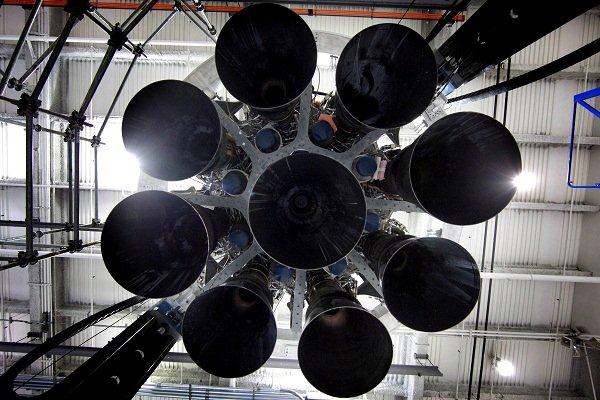
| Engine | Merlin 1D |
| Engine Type | Gas Generator, Open-Cycle |
| Propellant Feed | Turbopump |
| Merlin 1 D Thrust | Sea Level: 654kN – Vac: 716kN |
| Engine Diameter | ~1.0m |
| Engine Dry Weight | 450 to 490kg |
| Burn Time | 180s |
| Specific Impulse | 282s (SL) 311s (Vac) |
| Chamber Pressure | 97 bar |
| Expansion Ratio | 16 |
| Throttle Capability | 70% to 100% (Possibly Deeper) |
| Restart Capability | Yes (Partial) |
| Ignition | TEA-TEB |
| Attitude Control | Gimbaled Engines (pitch, yaw, roll) |
| Cold Gas Nitrogen RCS | |
| 4 Grid Fins (S1 Interstage) | |
| Shutdown | Commanded Shutdown |
| Stage Separation | Pneumatically actuated |
| mechanical collets |
Merlin 1D is an open-cycle gas generator engine. The gas generator operates fuel-rich, burning a small fraction of the LOX and RP-1 flow from the turbopumps to generate a hot high-pressure gas that drives a single turbine with the two turbopumps being driven by a single shaft. High-pressure RP-1 from the fuel turbopump is used in the hydraulic actuators that gimbal the nine main engines for thrust vector control. Generator gas flows through a heat exchanger which heats up Helium gas for tank pressurization in flight before being dumped overboard through an exhaust.
The Kerosene flow from the pump is directed to the combustion chamber and nozzle where it passes through heat exchangers as part of the regenerative cooling scheme of the engine. After passing through the heat exchangers, the fuel is pumped into the combustion chamber where is comes into contact with the oxidizer.
Merlin 1D operates at a high chamber pressure of 97bar to generate a sea level thrust of 654 Kilonewtons (66,700kg) and a vacuum thrust of 716kN (73,000kg) – giving Falcon 9 v1.1 a total liftoff thrust of 5,886kN (600,200kg). Vehicle control is provided by gimbaling the nine Merlin Engines.
The engine has an increased expansion ratio of 16 while the M1C engine had an expansion ratio of 14.5. Merlin 1D achieves the a thrust to weight ratio of 155 – the highest thrust-to-weight ratio in the liquid-fueled engine world. Merlin 1D uses a pyrophoric mixture of Triethylaluminium-Triethylborane (TEA-TEB) as igniter that is injected into the gas generator and combustion chamber to initiate the combustion process that is sustained as LOX and RP-1 flows into the GG/Chamber once turbopumps spin up, initially using high-pressure helium for spin-up.
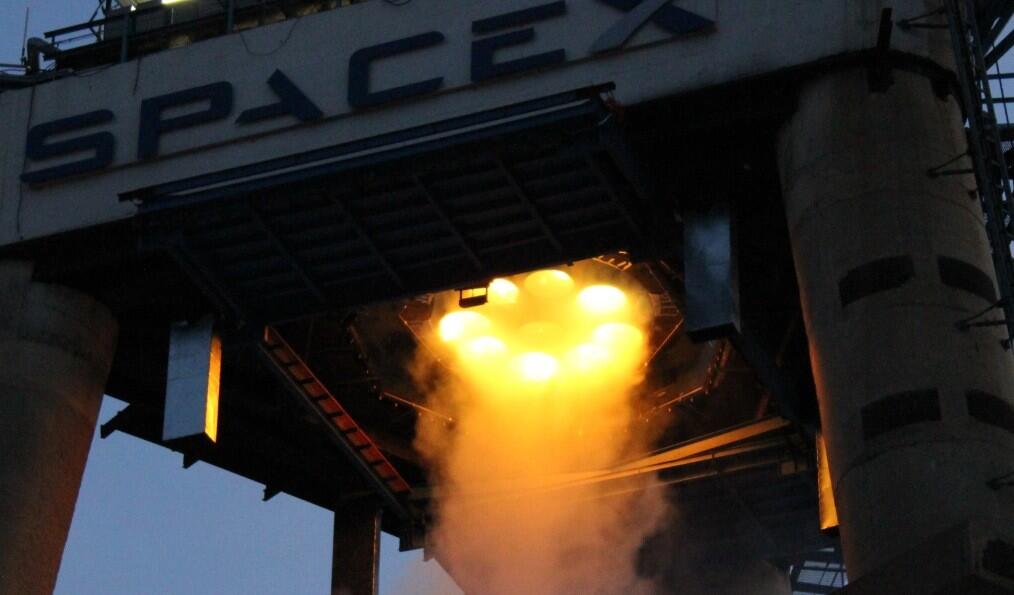
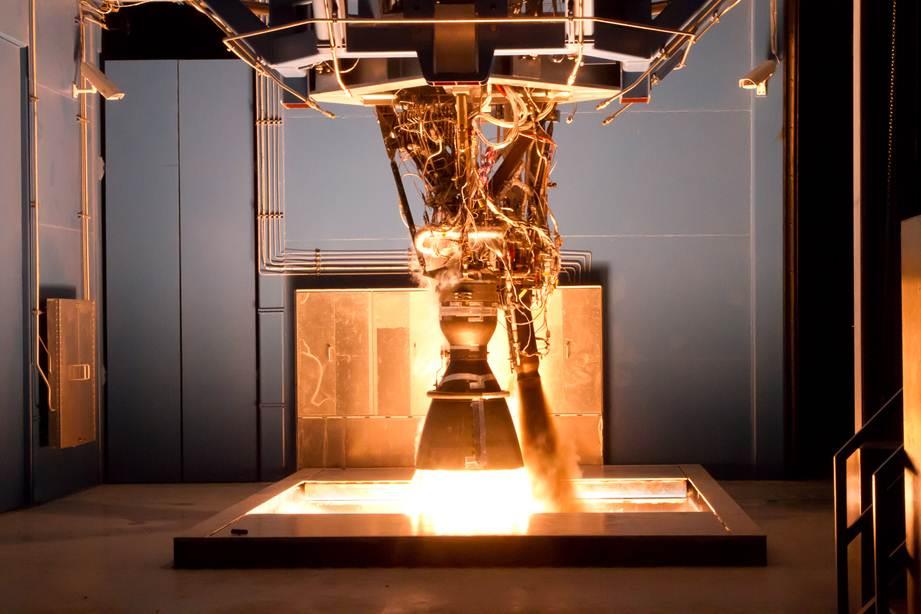
Also, the engine has a deep throttling capability which allows Falcon 9 to fly a more flexible mission profile. The baselined throttle capability ranges from 70 to 100% of rated performance, however, there are strong indications that M1D can throttle down to 40 or even 30%. Merlin 1C had no throttle capability and Falcon 9 v1.0 had to shut two Merlin engines down to limit stress on the vehicle as the launcher approached first stage cutoff.
Another major change to the Falcon v1.0 is the engine arrangement. Falcon 9 v1.0 used a 3×3 tic-tac-toe pattern; the v1.1 uses an “Octaweb.” Eight engines are arranged in a circle – clustered around a single Merlin 1D in the center that is installed slightly lower with its nozzle protruding the others. The gas generator exhaust pipes of the individual engines installed on the perimeter of the first stage are arranged toward the inboard direction, their flow passing through the gap between the center and the outer engines, transporting excess heat out of the engine compartment.
The skin of the launcher is the primary load path for the launch vehicle and arranging most of the engines on the perimeter of the skin eliminates a lot of structure that needs to be installed to carry loads from the engines to the skin. The original tic-tac-toe engine pattern required these load-transferring structures, adding to the overall mass of the vehicle. The new engine arrangement also improves thermal properties as it avoids hot spots.
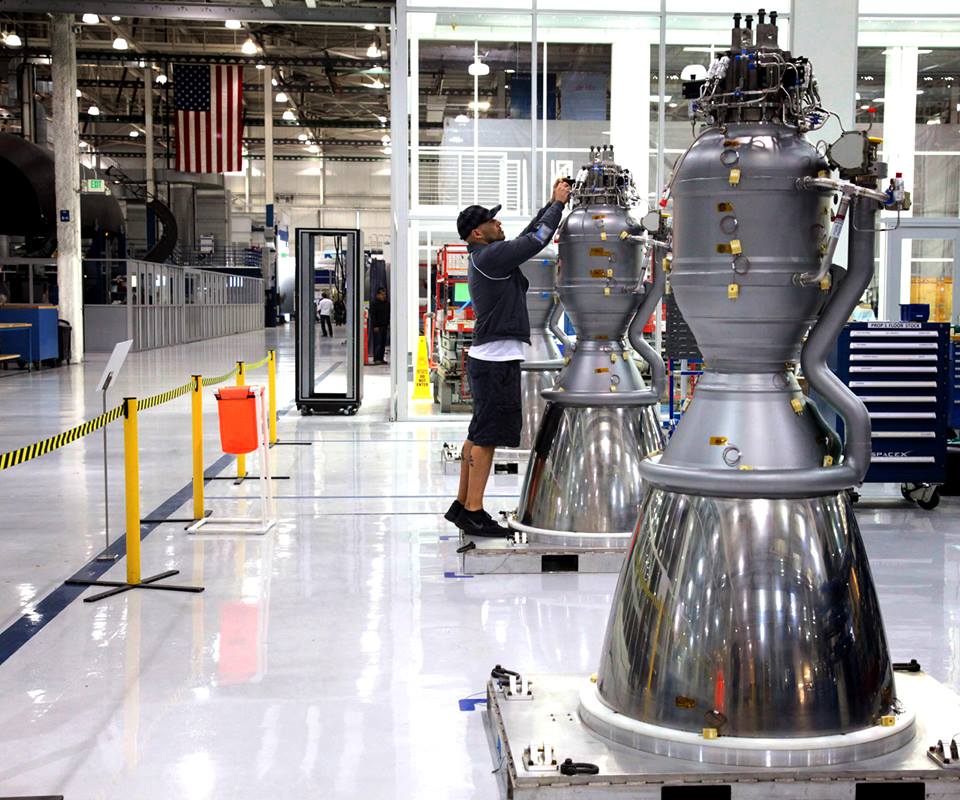
Just like the v1.0, the Falcon v1.1 launcher provides engine-out capability for a large portion of its first stage flight. All nine engines are ignited on the ground, about three seconds before launch. All must reach operational conditions and liftoff thrust for the launch release command to be issued.
The engines are monitored constantly in flight and computers can shut down any engine at any time to prevent RUD (rapid unplanned disassembly). Following the unplanned shutdown of an engine, the flight computer would re-plan the ascent trajectory to reach the cutoff target with the remaining engines by extending their burn.
Flying nine Merlin engines on the first stage provides engine-out capability and it also allows Merlin 1D to quickly build up flight heritage as each mission provides performance data on nine engines instead of a single engine that competing launchers are using.
The first stage is equipped with a cold-gas Reaction Control System using Nitrogen for three-axis control during coast phases and during single-engine burns.
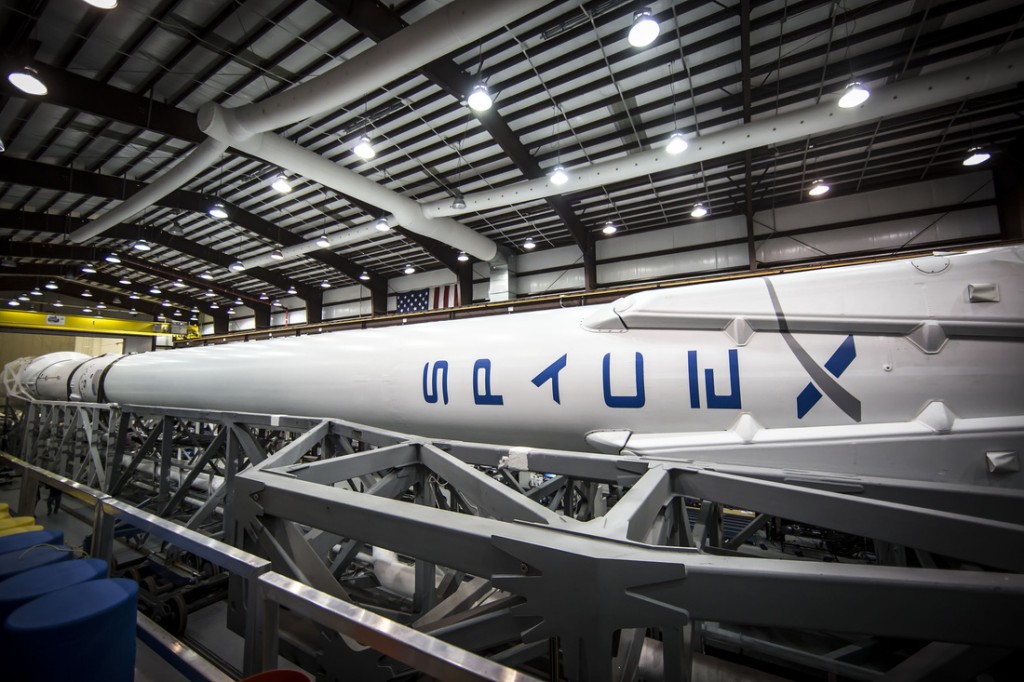
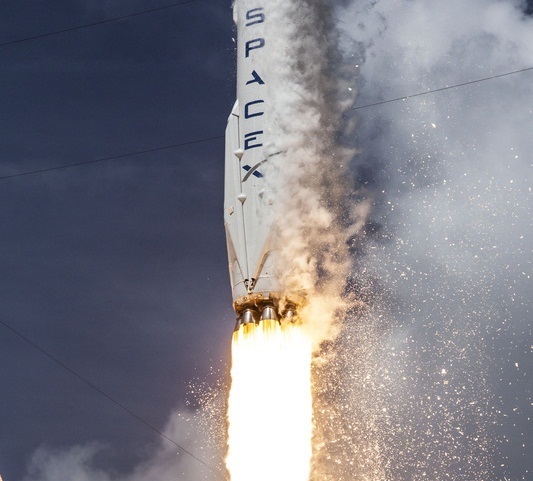
The Falcon 9 v1.1 first stage employs an S-Band communications system to transmit performance telemetry throughout the flight and after stage separation. It is equipped with a Flight Termination System consisting of two strings of transmitters, receivers and safe and arm devices. The FTS works with C-Band Communications and can be used to terminate the flight in case of any major anomalies.
The first stage has a primary burn time that varies depending on the mission design. Flights using the full performance of the first stage without propulsive return maneuvers burn the first stage for up to 185 seconds while missions that include a first stage return require the stage to shut down its engines after 155 to 165 seconds of powered flight to leave sufficient propellants for the descent to a landing site.
The first stage of the Falcon 9 is connected to the second stage via a carbon fiber aluminum core composite structure acting as interstage adapter, housing the MVac engine of the second stage. Stage separation is accomplished via separation collets and pneumatic pushers in three interfaces connecting the two stages. SpaceX tries to avoid using pyrotechnics for separation events.
First Stage Re-Use
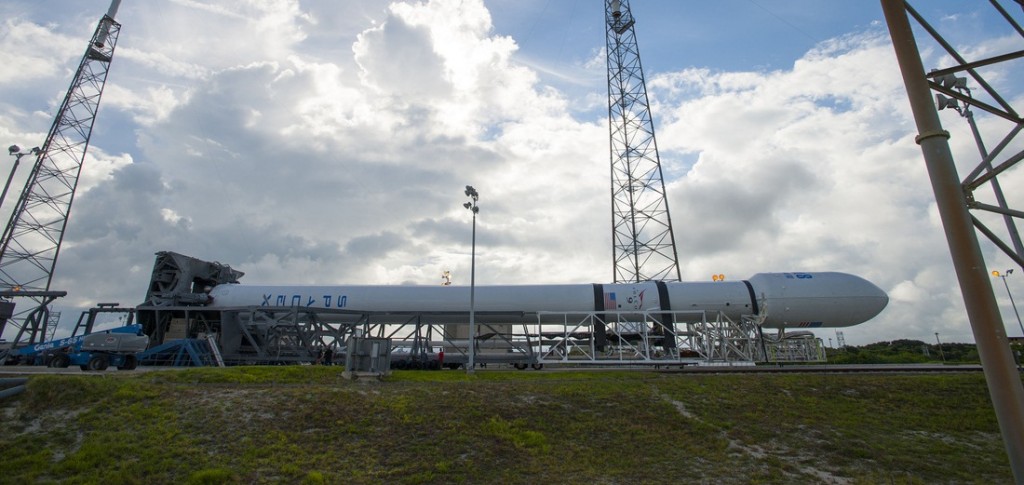
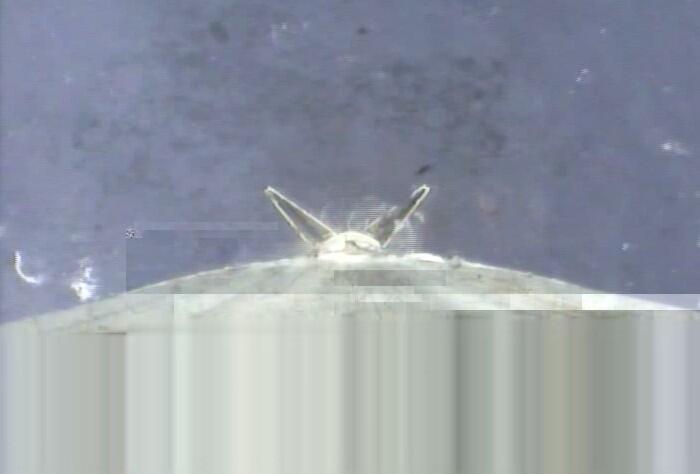
The overall goal of SpaceX is to make the first stage of Falcon 9 (and the three cores of Falcon Heavy) fully re-usable by returning them to a landing site through a series of complex maneuvers performed after separation from the launcher using a small portion of leftover propellant. To rapidly re-use the first stage of the vehicle, Falcon 9 is ultimately planned to fly the stage back to the launch site after separation and land it vertically on deployable landing legs. Initial attempts of demonstrating the return flight were made by soft-landing stages in the ocean before upgrading to landing the first stage boosters on a floating platform.
The re-usable version of Falcon 9 is known as F9R which itself does not represent a fully different launcher and is more of an add-on to the v1.1 version in the form of the Nitrogen Cold Gas Attitude Control System, the four deployable landing legs and four grid fins used for three-axis control during atmospheric flight, especially during non-propulsive flight phases.
The overall design driver for the landing legs was mass since adding significant weight to the first stage would have resulted in a significant payload penalty. Safety was also a major concern – the leg design had to be such that no premature deployment during powered ascent was possible which would result in a certain loss of the entire vehicle and payload. Made of aluminum honeycomb and carbon-composite materials, the four legs have a total mass of around 2,100 Kilograms consisting of a single-load bearing strut and aerodynamic fairing assembly. The central struts of the legs interface with the load-carrying structure of the first stage while the fairings have two structural interfaces at the base of the engine compartment heat shield and one interface on the lower portion of the leg.
During flight, the legs are stowed against the rocket body, covered by the fairings that ensure no additional aerodynamic disturbance is introduced by the legs. Deployment is accomplished by a pneumatic system using high-pressure helium. When deployed, the legs have a span of about 18 meters, capable of supporting the forces of landing and the mass of the nearly empty first stage.
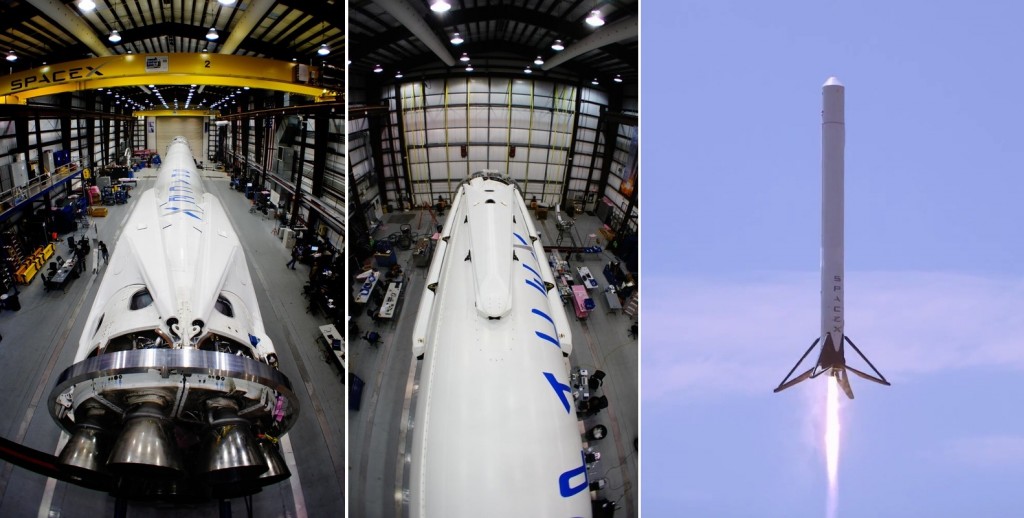
Leg deployment occurs in the late stages of the descent to the landing site, during the landing burn. When deployed, the legs provide additional aerodynamic stability. In the next stage of Falcon 9 evolution, the design of the legs will be modified to support an early deployment to allow the additional drag from the legs to contribute to the deceleration of the booster on its way to a soft landing.
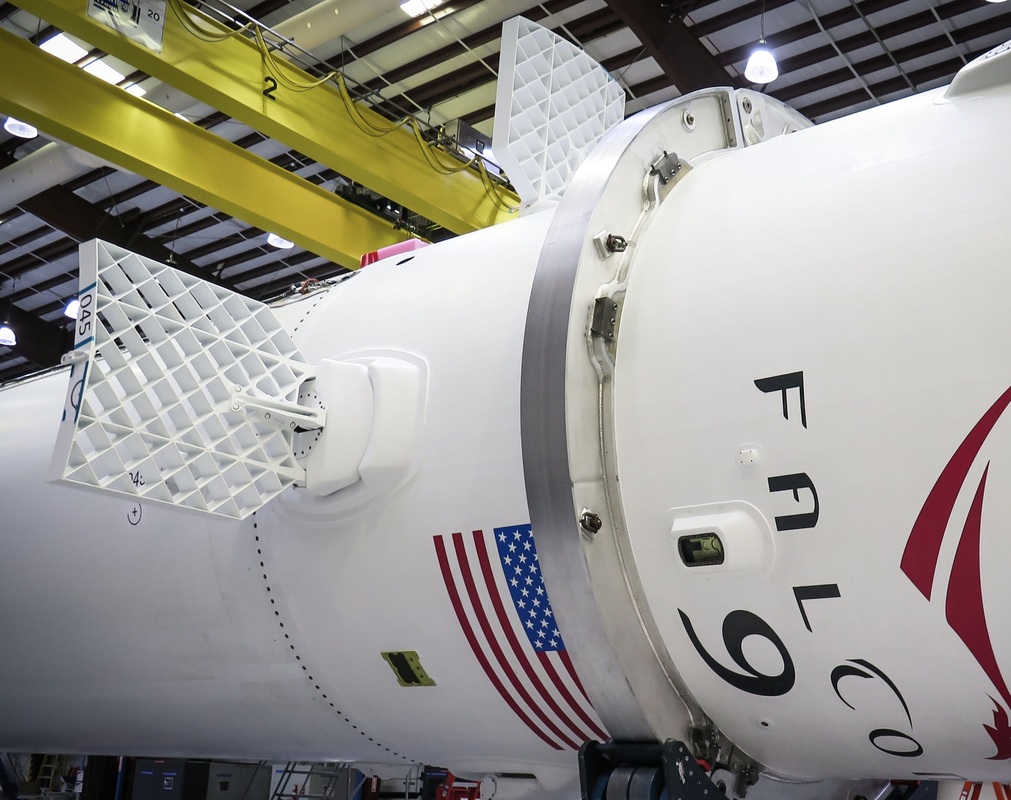
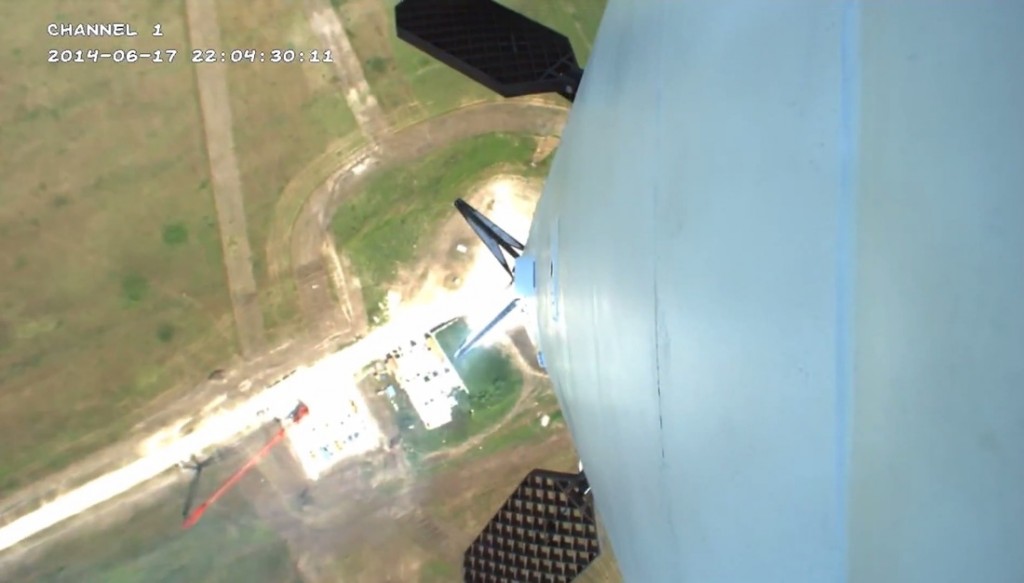
The four grid fins are launched in a position stowed against the uppermost section of the first stage near the interstage before being deployed when Falcon 9 re-enters the atmosphere. The four fins can be individually controlled in a two-degree of freedom type design, rotating and tilting at the same time, allowing for complex guidance and control during atmospheric flight.
The fins are an essential part of Falcon’s return sequence to provide control in atmospheric flight without active propulsion. Grid-fins have been widely used as a stabilizer on missiles & bombs and are shaped like miniature wings consisting of a lattice structure. The Russian Soyuz employs grid-fins in its launch abort system which would deploy when the launch escape rockets start firing in an abort scenario to stabilize the vehicle, but the fins used by SpaceX take it one step further as they can be moved independently to actively control the vehicle’s flight and not only act as a stabilizer.
Grid-fins perform well in all velocity ranges including supersonic and subsonic speeds with the exception of the trans-sonic regime due to the shock wave enveloping the grid. These properties make them ideally suitable for the Falcon 9 first stage that starts out at supersonic speeds and returns to subsonic velocity as it travels through the atmosphere, en-route to the landing site. The four fins are rotated and tilted independently by an open hydraulic system that uses pressurized hydraulic fluid supplied from a pressurized tank that is dumped overboard after flowing through the hydraulic actuators of the fin system. The design was also driven by overall mass considerations.
The addition of the grid fins was expected to improve the accuracy of Falcon’s landing by three orders of magnitude – previous landing attempts in the ocean had a ten-Kilometer targeting accuracy while the return to a platform or a pad on land requires the stage to land within a few meters of its bulls-eye target.
Before attempting to land first stages on land, SpaceX commissioned a floating platform that can be deployed in the ocean, downrange from the launch site to provide a landing pad for the first stage boosters.
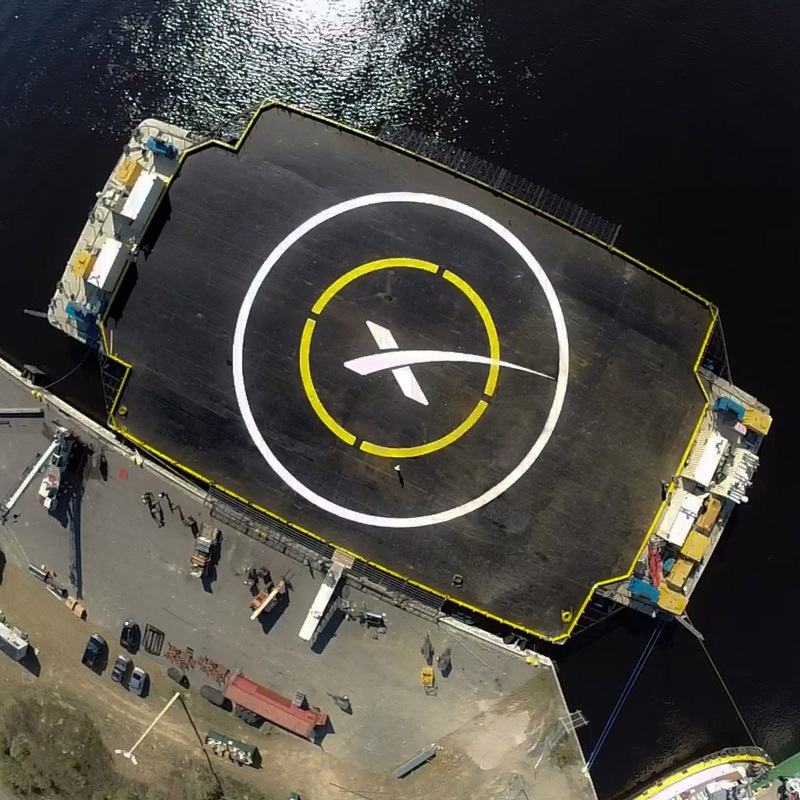
Known as the Autonomous Spaceport Drone Ship, the floating landing platform was built at a Louisiana shipyard and measures 91 meters by 52 meters with a prominent Space“X marks the Spot” logo in the center. The ship sports four diesel-powered azimuth thrusters – similar to those on oil rigs – provided by Thrustmaster, a marine equipment manufacturer that also provided power modules and controls to outfit the ship with a Portable Dynamic Positioning System. Processing GPS data, the Autonomous Spaceport Drone Ship will be able to keep its assigned position with an impressive accuracy of three meters.
A high accuracy is required since Falcon 9 will have to land on the platform with all four of its legs that span approximately 18 meters, leaving just over 30 meters for GPS errors between the two craft and position errors of the drone ship, sea swell as well as errors by Falcon 9, making its fast-paced hoverslam landing under the power of one of its nine Merlin 1D engines with a thrust to weight ratio greater than one.
The ASDS is outfitted with a water deluge system that dumps water onto the deck to protect it from the heat of the engine of the arriving booster. Numerous attachment fixtures are part of the deck structure that would allow the securing of the first stage after landing on the platform.
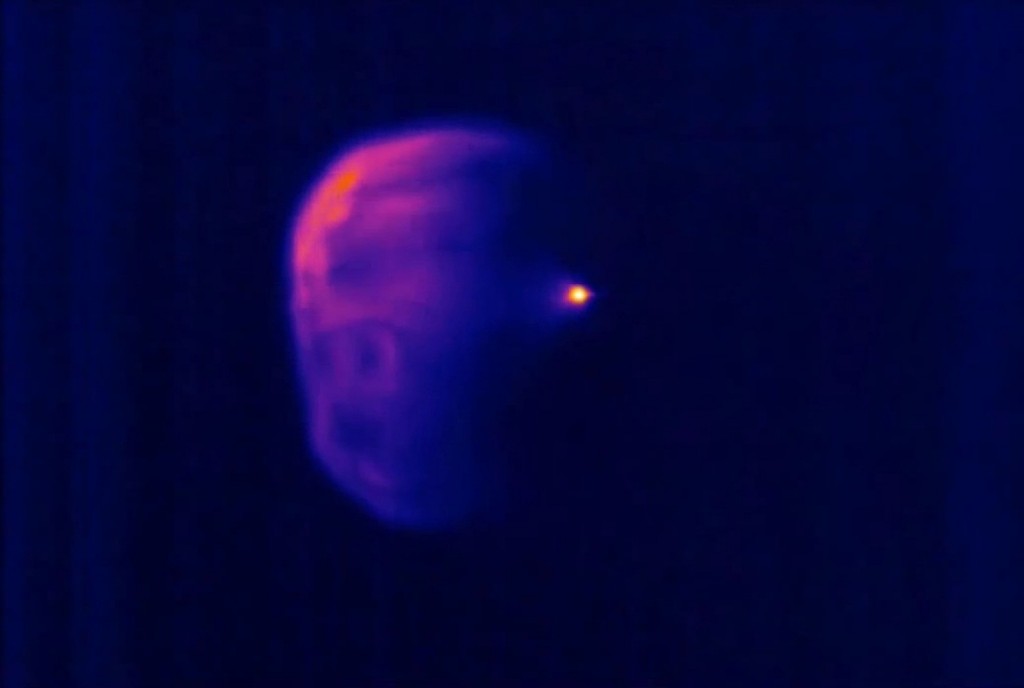
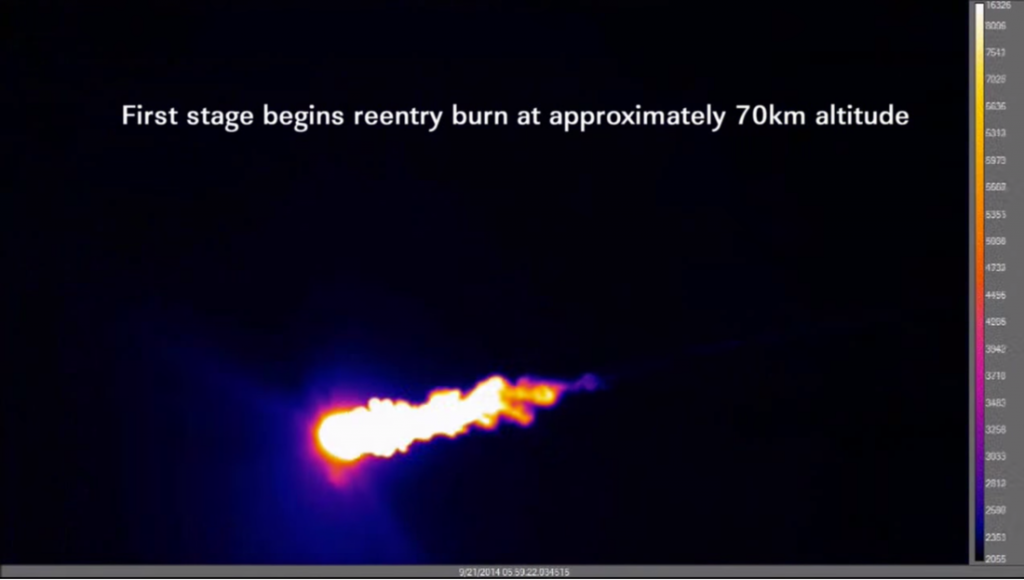
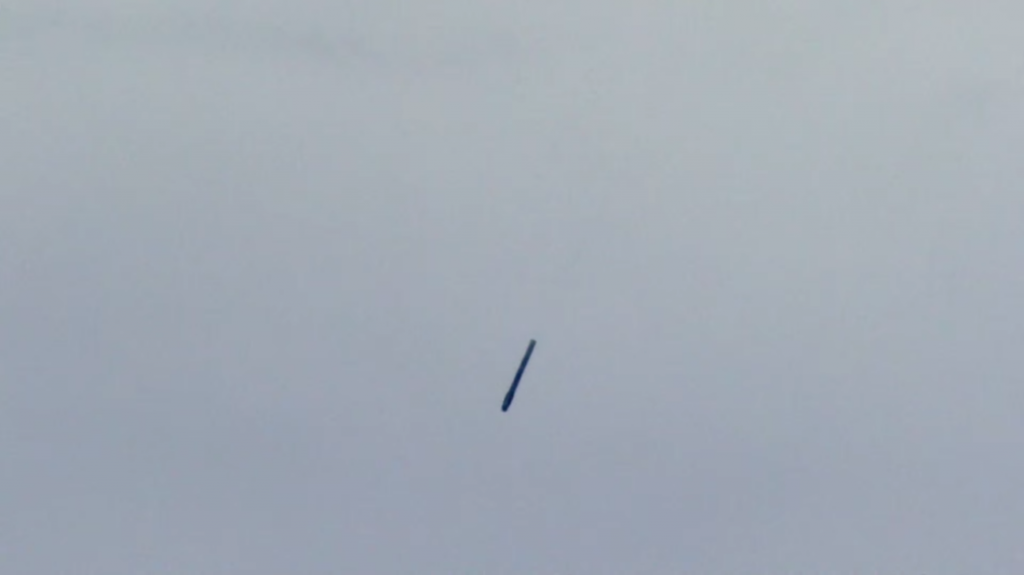
The return flight of the first stage booster starts at the moment of separation from the Falcon 9 second stage that is delivered to a trajectory from where it can boost the payload into its desired orbit. First stage burn duration in missions that include a propulsive return is on the order of 160 seconds.
Separating the second stage at about 80km in altitude at a speed of Mach 10, the first stage heads on to an apogee altitude of around 140 Kilometers. Initially, the first stage uses its cold gas thrusters for attitude control – starting with a maneuver to depart the engine plume of the second stage before re-orienting to an engines-first position that is maintained past the point of apogee.
Around T+4.5 minutes into the mission, the first stage re-lights a subset of its engines for a boost-back maneuver that slows the vehicle down and controls the downrange travel distance of the stage, beginning to target the planned landing site – either on land or in the ocean. The duration of the boost-back burn depends on the target landing site and is also driven by propellant availability for the return which varies depending on payload mass and insertion orbit.
Heading back into the dense layers of the atmosphere, the first stage completes its supersonic retro propulsion burn using three engines that are fired for about 20 seconds starting at an altitude of 70 Kilometers. This burn in combination with drag in the atmosphere slows the first stage down from 1,300m/s to about 250m/s.
The first stage aft section has been outfitted with shielding material to be able to withstand the re-entry environment and during atmospheric flight, the stage can maintain an engine-forward position by its low center of gravity caused by the heavy engine compartment in the aft.
Beginning at re-entry, the first stage starts using its four grid fins for roll, pitch and yaw control, especially during periods of flight when the engines are not running. Covering the final 40 Kilometers to landing, the booster uses its grid fins to maintain a pitch-trim to continue refining the course towards the landing platform while maintaining stable yaw and roll rates.
Homing in on its landing spot, the first stage ignites its center engine to begin slowing down to a landing speed of just about two meters per second and make the final cross-track and range adjustments to land on the platform. Ten seconds into the landing burn, the four landing legs are deployed to put the stage into its final landing configuration with touchdown just a few seconds later.
Second Stage
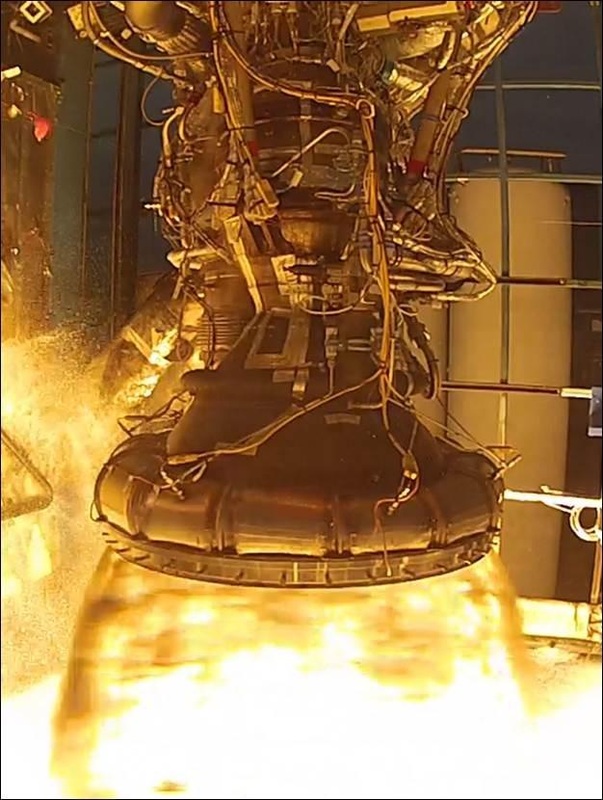
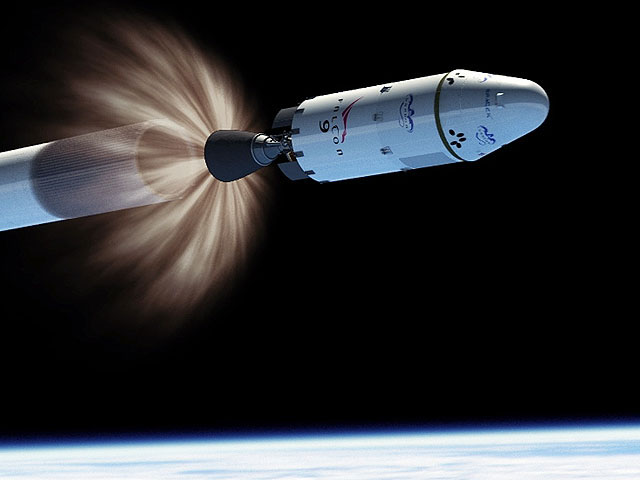
| Type | Falcon 9 v1.1 Stage 2 |
| Length | 13.8m (Separated Length) |
| Diameter | 3.66m |
| Inert Mass | 3,900kg |
| Propellant Mass | 92,670kg |
| Fuel | Rocket Propellant 1 |
| Oxidizer | Liquid Oxygen |
| LOX Mass | 64,820kg |
| RP-1 Mass | 27,850kg |
| LOX Tank | Monocoque |
| RP-1 Tank | Monocoque |
| Material | Aluminum-Lithium |
| Guidance | Inertial |
| Tank Pressurization | Heated Helium |
| Propulsion | 1 x Merlin 1D Vac |
| Engine Type | Gas Generator |
| Propellant Feed | Turbopump |
| Thrust | 801kN |
| Engine Dry Weight | 450 to 490kg |
| Burn Time | 372s |
| Specific Impulse | 340s (Est: ~345s) |
| Chamber Pressure | 9.7MPa (1,410psi) |
| Expansion Ratio | >117 |
| Throttle Capability | Yes |
| Restart Capability | Yes |
| Ignition | TEA-TEB, Redundant |
| Pitch, Yaw Control | Gimbaled Engine |
| Roll Control | Reaction Control System |
| Shutdown | Commanded Shutdown |
| Reaction Control S. | Cold-Gas Nitrogen Thrusters |
The second stage of the Falcon 9 v1.1 is based on the design of the v1.0 second stage which is essentially a smaller version of the first stage. SpaceX has always followed a policy of choosing simple solutions to reduce cost and risk in order to manufacture a robust launch system. Using the same materials, tools and manufacturing techniques for the two stages is a perfect example of that policy.
As with the first stage, the exact dimensions of the second stage have not yet been disclosed by SpaceX. The second stage matches the first stage’s diameter of 3.66 meters. Documentation shows the stage to be 13.8 meters in length without payload adapter and 1st Stage Interstage with an inert mass just under four metric tons. The second stage can hold 64,820kg of LOX and 27,850kg of RP-1 giving it a launch mass of 96,600kg.
Comparing it with the v1.0, the second stage of the v1.1 features stretched propellant tanks that are also built using Aluminum-Lithium Monocoque structure for both tanks. The second stage also uses Rocket Propellant 1 as fuel and Liquid Oxygen as oxidizer.
One Merlin 1D Vac engine is powering the second stage. This engine differs from the first stage engines as it is optimized for operation in vacuum featuring an extended nozzle with a high expansion ratio. M1D Vac is also a turbopump-fed gas generator engine, it also operates at a chamber pressure of 97 bar.
Using an extended nozzle creates a high expansion ratio of greater than 117:1. M1D Vac has a high specific impulse of 340s that could be as high as 345s. It generates a total vacuum thrust of 801 Kilonewtons (81,700 Kilograms). The engine can support multiple ignitions to be able to fly a flexible mission profile in order to reach a variety of orbits and trajectories. The second stage TEA-TEB ignition system is fully redundant.
Second Stage Burn time is variable with nominal firings of ~372 seconds.
The second stage is equipped with a Reaction Control System for three axis-control during coast phases and roll control during burns. Falcon 9 v1.0 used four Draco engines installed on the second stage for three axis control with Draco engine providing 400 Newtons of thrust using Nitrogen Tetroxide as Oxidizer and Monomethyl-hydrazine as fuel. The Falcon 9 v1.1 uses a cold-gas attitude control system employing a number of Nitrogen thrusters.
The second stage of the Falcon 9 rocket facilitates the avionics and flight computers that control all aspects of the flight. The avionics of the Falcon 9 feature a number of changes and upgrades from the v1.0 to the v1.1 version. All avionics and controllers are manufactured in-house by SpaceX. The system is fully redundant, constantly checking itself to verify that all GNC components are functioning properly. SpaceX uses commercial off-the-shelf parts that are radiation tolerant instead of radiation hardened (cost reduction). The flight computers run on Linux with software written in C++.
Avionics are triple redundant and the rocket’s inertial navigation system uses GPS overlay for additional orbital insertion accuracy.
In addition to the main avionics units of the launch vehicle, each of the Merlin Engines is equipped with three processing units in a single engine controller. The engine controller monitors all parameters of the engine and interfaces with the main avionics units. Each of the three processing units are constantly checking on the others to provide fault-tolerance.
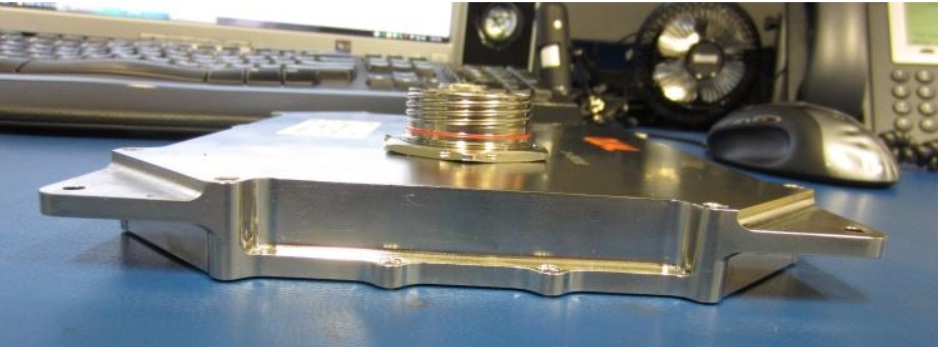
Payload Fairing
| Payload Fairing | Composite Fairing |
| Diameter | 5.2m |
| Length | 13.1m |
| Weight | ~1,750kg |
The Payload Fairing is positioned on top of the stacked vehicle and its integrated spacecraft. It protects the vehicle against aerodynamic, thermal and acoustic environments that the launcher experiences during atmospheric flight. When the launcher has left the atmosphere, the fairing is jettisoned. Separating the fairing as early as possible increases ascent performance.
Falcon 9’s standard Fairing is 13.1 meters in length and 5.2 meters in diameter. The fairing consists of an aluminum honeycomb core with carbon-fiber face sheets fabricated in two half-shells. Separation is accomplished via a pneumatic system along the vertical seam that pushes the two halves apart.
Up to three spacecraft access doors or Radio Frequency Windows can be supported by the fairing. A small 3.6-meter fairing is also being developed.
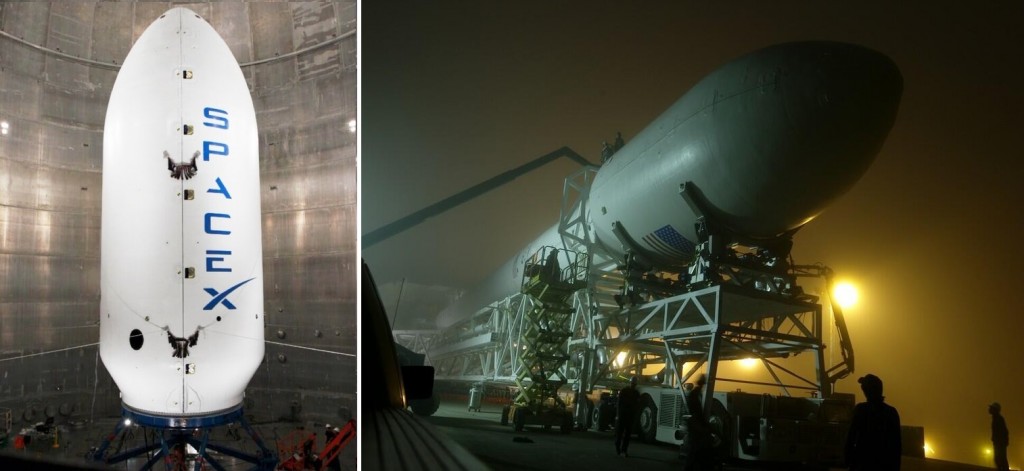
Payload Adapters
Payload Adapters interface with the vehicle and the payload and are the only attachment point of the payload on the Launcher. They house equipment that is needed for Spacecraft Separation and ensure that the payload is secured during powered flight. Electrical and Communication connections are also part of the Adapter and route spacecraft Telemetry to the Flight Computers for downlink. A variety of different adapters is available to suite different spacecraft needs and requirements.

Note: Many specifications of Falcon 9 v1.1 given on this page have risen out of estimations on the initial version of Falcon 9 v1.1 and evolved as documentation and data became available on the v1.1 version and its evolution into F9R. Therefore, a number of parameters on this page have changed over time, in particular the mass and dimensions of the Falcon 9 1st/2nd stages (e.g. the 1st stage was initially estimated to be 42m long with a dry mass of 18,000kg).
